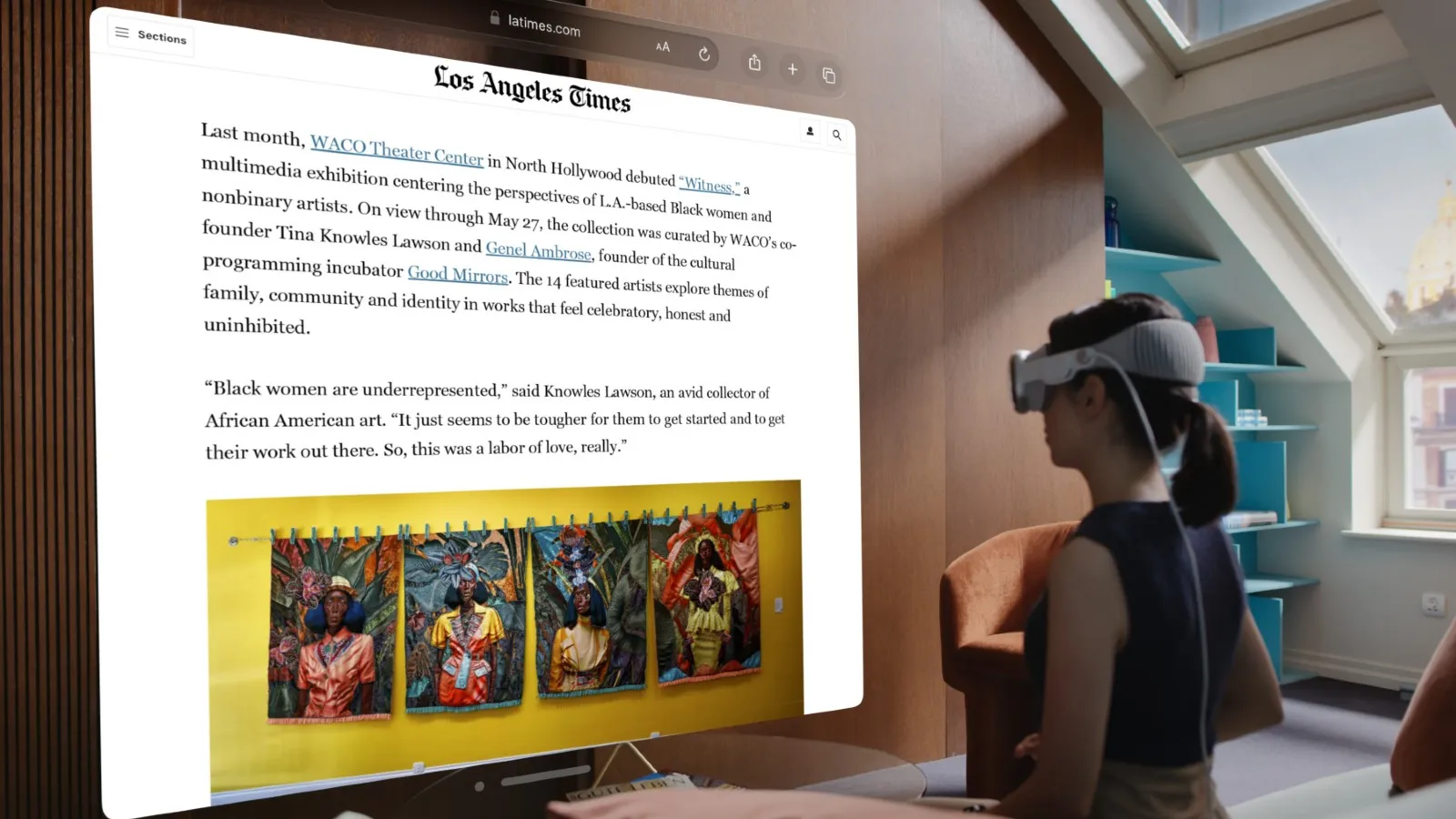The term spatial computing has been floating around for a couple of decades now, but with the release of the Vision Pro headset, it’s clear it’s the next big thing in tech. But what does the term stand for and why does it matter? Let’s explore.
It may seem like a new concept, but the term “spatial computing” was actually coined back in 2003 by researcher Simon Greenwold, who described it as “human interaction with a machine in which the machine retains and manipulates referents to real objects and spaces.” Simply put, spatial computing blends the digital and physical by overlaying computer interfaces onto the real world. Rather than stare at a screen, users interact with digital objects and information using natural movements in 3D space.
This could look like visual driving directions beamed right onto the road through your car’s windshield. Or collaborating with distant coworkers in a virtual office metaverse using avatars. Even Pokémon Go can be considered a spatial computing game since it’s all about overlaying Pokémon characters onto the real world and interacting with them.

By meshing physical and digital, spatial computing aims to make technology more intuitive and integrated into our everyday lives.
How does spatial computing work?
Unlike conventional computing confined to screens, spatial computing integrates data, logic, and 3D environmental information for a seamless fusion of real and virtual. Devices like Vision Pro capture comprehensive visual data from a user’s surroundings via advanced sensors and cameras. This data is processed by algorithms into a 3D map of the physical environment, called spatial mapping.

The device then layers virtual objects onto this map, enabling precise positioning and manipulation of digital content within real settings. As seen in mixed reality headsets, users can interact through eye tracking, hand controllers, motion sensors, and voice commands.
What’s Apple’s vision with spatial computing?
Apple’s got a real vision for the future with their new Vision Pro headset and visionOS software. The combo lets you navigate apps and media just by looking around, gesturing with your hands, or using voice commands. This setup enhances multitasking hugely since you can now have multiple apps and windows open at the same time – something that’d otherwise require a bunch of screens to pull off. Apple calls this collective experience “spatial computing” and it really makes the 3D and collaborative possibilities feel endless.

Of course, the tech is still pretty new and expensive, so it might take a few years before spatial computing really catches on for regular folks and businesses. But if Apple can bring down the size and price some over time, their Vision Pro headset could definitely help push immersive augmented and virtual reality into the mainstream. The goal is to eventually make the Vision Pro resemble a pair of regular specs that people can wear all the time (except when sleeping, of course!), making smartphones redundant.
What are some of the possible applications of spatial computing?
Spatial computing is a game-changer for many industries, as it lets you create and interact with virtual objects and environments in the real world. Imagine playing a video game where you can use your hands and eyes to control the action, or watching a basketball game as if you were sitting next to the court. Or how about recording your memories in 3D and reliving them later? That’s what spatial computing can do for gaming and entertainment.
But spatial computing is not just for fun. It can also help you learn and work better. For instance, medical students can practice surgery in a realistic virtual setting, or science students can experiment with virtual machines and models. Architects and designers can use spatial computing to create and modify their designs in the real world, without wasting time and money on physical prototypes. They can also test how their products would look and feel in different situations and settings.
Spatial computing can also improve healthcare in many ways. Doctors can use spatial computing to access vital information and images while treating patients, or to see their scans in 3D while operating on them. Patients can benefit from spatial computing by getting personalised virtual assistants and exercises that can help them recover from physical or mental challenges.
The future of spatial computing
Spatial computing has not yet reached its full potential – in fact, it could take it years or even decades to mature. One of the main obstacles is the high price of the devices that enable it. Most of them are out of reach for the average consumer and only appeal to some specialised sectors that can afford them. Another challenge is the user experience. The devices are often heavy, bulky, and uncomfortable to wear for long periods. They also have low battery life and poor resolution, which can affect the immersion and realism of the virtual scenes. These issues can also lead to side effects such as tiredness and nausea.
But there is hope for the future of spatial computing. A key factor that could influence its development is Apple’s entry into the market. Apple is known for creating products that set the trends and standards for others to follow. The Vision Pro could inspire other companies and developers to create more innovative and accessible devices and experiences for spatial computing.
© IE Online Media Services Pvt Ltd
First uploaded on: 02-02-2024 at 20:19 IST

Deepak Sen is a tech enthusiast who covers the latest technological innovations, from AI to consumer gadgets. His articles provide readers with a glimpse into the ever-evolving world of technology.



